The GMPLS Control Plane
|
| < Day Day Up > |
|
To control components outside the standard data packet, a separate control plane was developed for GMPLS. This control plane is the true magic of GMPLS. It allows for the total control of network devices.
The GMPLS control plane provides for six top-level functions:
-
Discovery of neighborhood resources
-
Dissemination of link status
-
Topology link-state management
-
Path management and control
-
Link management
-
Link protection
Neighbor Discovery
The link manager, all switches, and all multiplexers must know every component of a network—all routers and all active components. GMPLS uses a new protocol, LMP, to discover these devices and to negotiate functions (see Figure 6.8).
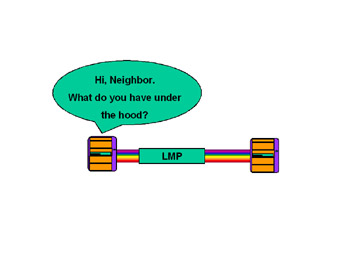
Figure 6.8: Neighbor Discovery
Dissemination of Link Status
It does no good just to know what hardware is out there if the link is down or having problems. To disseminate this information, a routing protocol must be used. For GMPLS, both the OSPF and the IS-IS protocols are being modified to support this function (see Figure 6.9).
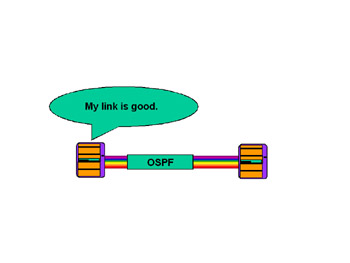
Figure 6.9: Link Status Distribution
Typology State Management
Link-state routing protocols, such as OSPF and IS-IS, can be used to control and manage the link state typology (see Figure 6.10).

Figure 6.10: Topology Information
Path Management
In previous chapters, we determined that MPLS can use RSVP to establish a link from end to end. However, if MPLS data traverses telecom networks, other protocols such as UNI, PNNI, or SS7 must be implemented. Path management can be a real challenge because several standards organizations are involved in the process. Currently, the IETF is working on modifications to RSVP and Label Distribution Protocol (LDP) to extend those protocols to allow for GMPLS path management and control (see Figure 6.11).
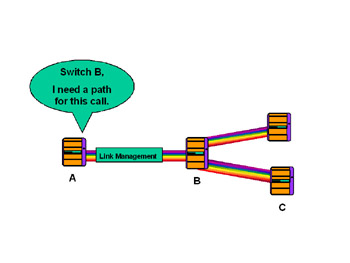
Figure 6.11: Path and Link Management Control
Link Management
In MPLS, the LSP is used to establish and tear down links and aggregate links. In GMPLS, the ability to establish and aggregate optical channels is required. LMP extends the MPLS functions into an optical plane where link building improves scalability (see Figure 6.12).
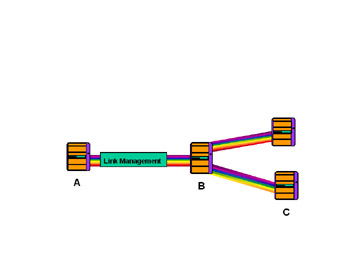
Figure 6.12: Link Management
Protection and Recovery
Intelligent optical networking allows inflexible optical networks to interact with each other. With GMPLS, instead of having one ring with a backup ring for protection, the network creates a true mesh that allows for several different paths (see Figure 6.13). Optical networking can go from a one-to-one protection method to a one-to-many protection method.
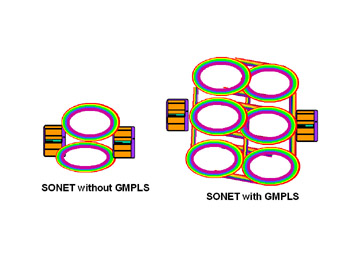
Figure 6.13: SONET Matrix
| Checkpoint | Answer the following true/false questions.
Answers: 1. True; 2. true; 3. true; 4. false. |
|
| < Day Day Up > |
|
EAN: 2147483647
Pages: 138